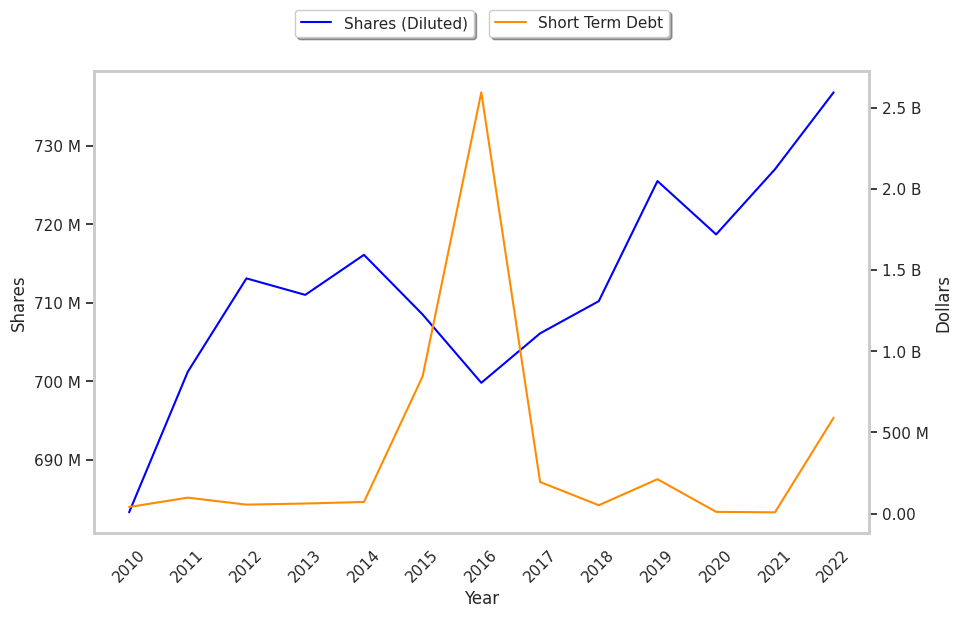Standing out among the Street's worst performers today is Danaher, a farm & heavy construction machinery company whose shares slumped -3.4% to a price of $212.39, 23.97% below its average analyst target price of $279.34.
The average analyst rating for the stock is buy. DHR lagged the S&P 500 index by -2.0% so far today and by -38.0% over the last year, returning -21.0%.
Danaher Corporation designs, manufactures, and markets professional, medical, industrial, and commercial products and services worldwide. The company is part of the industrials sector, which is considered cyclical. This means that sales revenues, and to some extent share prices, tend to increase during economic booms and then fall back to earth during busts. However, industrial companies can dampen this cyclical effect if they are invovled in multiple industries.
Danaher's trailing 12 month P/E ratio is 25.0, based on its trailing EPS of $8.51. The company has a forward P/E ratio of 21.9 according to its forward EPS of $9.69 -- which is an estimate of what its earnings will look like in the next quarter. The P/E ratio is the company's share price divided by its earnings per share. In other words, it represents how much investors are willing to spend for each dollar of the company's earnings (revenues minus the cost of goods sold, taxes, and overhead). As of the first quarter of 2023, the industrials sector has an average P/E ratio of 20.49, and the average for the S&P 500 is 15.97.
To better understand DHR’s valuation, we can divide its price to earnings ratio by its projected five-year growth rate, which gives us its price to earnings, or PEG ratio. Considering the P/E ratio in the context of growth is important, because many companies that are undervalued in terms of earnings are actually overvalued in terms of growth.
Danaher’s PEG is 103.67, which indicates that the company is overvalued compared to its growth prospects. Bear in mind that PEG ratios have limits to their relevance, since they are based on future growth estimates that may not turn out as expected.
An analysis of the company's gross profit margins can help us understand its long term profitability and market position. Gross profits are the company's revenue minus the cost of goods only, and unlike earnings, don't take into account taxes and overhead. Here's an overview of Danaher's gross profit margin trends:
| Date Reported | Revenue ($ k) | Cost of Revenue ($ k) | Gross Margins (%) | YoY Growth (%) |
|---|---|---|---|---|
| 2023-02-22 | 31,471,000 | -12,522,000 | 60 | -1.64 |
| 2022-02-23 | 29,453,000 | -11,501,000 | 61 | 8.93 |
| 2021-02-25 | 22,284,000 | -9,809,000 | 56 | 0.0 |
| 2020-02-21 | 17,911,000 | -7,927,000 | 56 | 0.0 |
| 2019-02-21 | 17,049,000 | -7,544,000 | 56 | 0.0 |
| 2018-02-21 | 18,329,700 | -8,137,200 | 56 |
- Average gross margin: 57.5 %
- Average gross margin growth rate: 0.1 %
- Coefficient of variability (lower numbers indicating more stability): 4.1 %
We can see from the above that Danaher's gross margins are very strong. Potential investors in the stock will want to determine what factors, if any, could derail this attractive growth story.
When we subtract capital expenditures from operating cash flows, we are left with the company's free cash flow, which for Danaher was $9.66 Billion as of its last annual report. Over the last 4 years, the company's average free cash flow has been $6.45 Billion and they've been growing at an average rate of 0.0%. With such strong cash flows, the company can not only re-invest in its business, it can afford to offer regular returns to its equity investors in the form of dividends. Over the last 12 months, investors in DHR have received an annualized dividend yield of 0.5% on their capital.
Another valuation metric for analyzing a stock is its Price to Book (P/B) Ratio, which consists in its share price divided by its book value per share. The book value refers to the present liquidation value of the company, as if it sold all of its assets and paid off all debts). Danaher's P/B ratio indicates that the market value of the company exceeds its book value by a factor of 3.03, but is still below the average P/B ratio of the Industrials sector, which stood at 3.78 as of the first quarter of 2023.
Danaher is likely fairly valued at today's prices because it has an inflated P/E ratio, an average P/B ratio, and a pattern of improving cash flows with a flat trend. The stock has strong growth indicators because of its strong margins with a positive growth rate, and an inflated PEG ratio. We hope this preliminary analysis will encourage you to do your own research into DHR's fundamental values -- especially their trends over the last few years, which provide the clearest picture of the company's valuation.



